Lineups:
Manchester United (4-2-3-1): De Gea; Valencia, Bailly, Smalling, Young; McTominay, Matic; Mata, Sanchez, Rashford; Lukaku
Liverpool (4-3-3): Karius; Alexander-Arnold, Lovren, van Dijk, Robertson; Milner, Can, Oxlade-Chamberlain; Salah, Mane, Firmino
Jose Mourinho was without the services of Paul Pogba, who pulled up in training. United hence played McTominay and Matic in midfield, with Rashford coming in on the left and Mata on the right, while at the back, Eric Bailly made his first league start in months after returning from injury.
Jurgen Klopp played his expected team, although captain Jordan Henderson was only on the bench with a foot issue. James Milner replaced him in midfield; the rest of the side was as expected.
Major tactical themes:
United’s excellent defensive shape proves too much to hurdle for Liverpool
While United’s lineup looked like an attacking one on paper, with all of Sanchez, Mata, Rashford and Lukaku playing, it was always going to be safety-first for Jose Mourinho in a game like this, and so it proved. United were set out in a low defensive block, with their defensive line usually not more than 5 yards ahead of the 18-yard box, and the screening midfielders Matic and McTominay holding their positions in front of the defence. This negated the pace of Mohamed Salah and Sadio Mane, as they had barely any room to run into, while United’s solid central block meant that Liverpool had to either attempt to play through it, or go wide. Since Coutinho’s departure to Barcelona, Liverpool do not possess a player with the creative ability to play through such a solid, well-drilled defence; all three of their central midfielders on Saturday are renowned more for their tenacity and work-rate, not necessarily for creativity. They rarely went wide, either, with both Salah and Mane choosing to come inside and play in front of the United defence; the one occasion when Mane went on the outside of the full-back and crossed led to Bailly’s own goal, perhaps demonstrating that Liverpool would have benefited from such an approach from the outset.
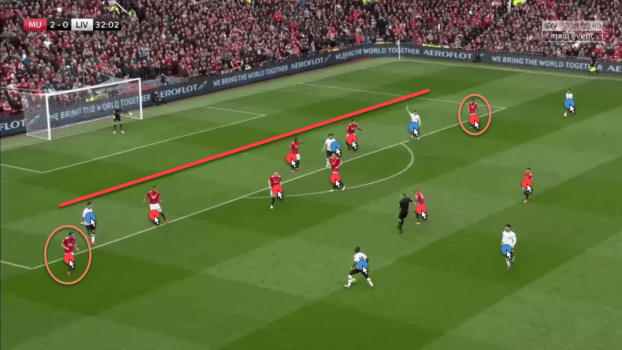
While all of United’s defenders had good, solid games, a special mention must be made of Ashley Young, who expertly nullified Mohamed Salah, so much so that Salah had the fewest touches of any of Liverpool’s outfield players during the game. Young rarely allowed Salah any room to run into, and on the occasions when the Egyptian moved centrally to influence the game, Chris Smalling picked him up. The communication between Smalling and Young was also excellent, meaning that the Premier League’s most in-form player had barely a sniff of goal. As an aside, Jose Mourinho has now managed to snuff out the attacking threat of two of the league’s most dangerous players, Eden Hazard and Mohamed Salah, in home games at Old Trafford.
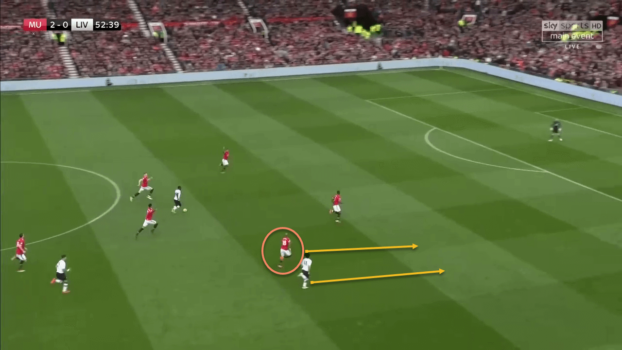
Liverpool, and Lovren in particular, struggle against the long ball
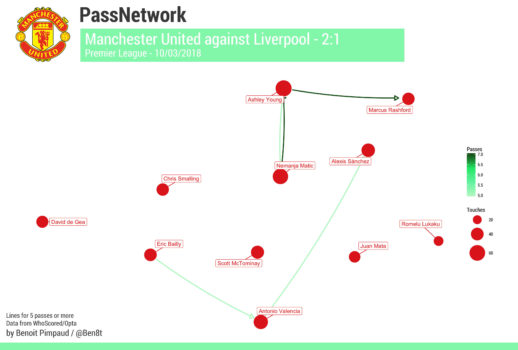
Right from the start of the match, there were no illusions about United’s gameplan. David de Gea did not even attempt to pass out from the back, launching it long towards Lukaku on every occasion. Both of United’s goals through Rashford came from such passes, with Lukaku winning the header against Lovren and setting up the goalscoring chance. This approach worked because United had at least three players in and around Lukaku, in support, during the first half, which gave him passing options once he won the ball. It also looked like United had identified Lovren as a weakness in the Liverpool backline, as Lukaku consistently positioned himself against the Croatian during de Gea’s long kicks out. A few stats from the game make this gameplan even more evident: almost 21% of all the passes played by United were long passes, as compared to 9.4% for Liverpool, while United also won 63% of aerial duels during the game; United identified a weakness in the Liverpool defence, and exploited it in ruthless fashion.
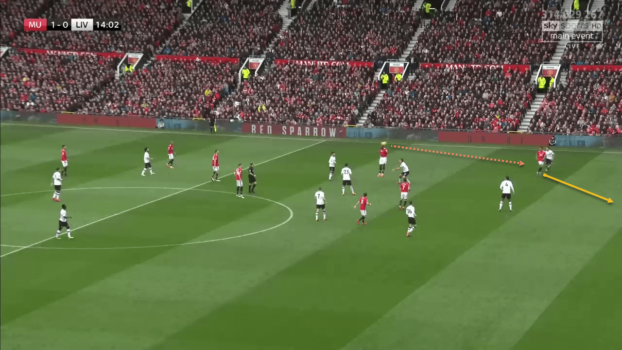
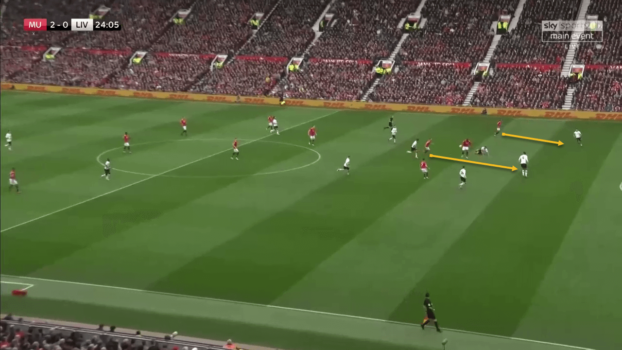
Sanchez more involved centrally without Pogba
Paul Pogba’s absence through injury, and a lack of match-fit central midfielders, meant that Jose Mourinho made a couple of interesting selections for this game. Alexis Sanchez played centrally, behind Romelu Lukaku, while Marcus Rashford came in on the left for his first league start of 2018, and Juan Mata played on the right. This gave United a bit of balance; the two midfielders did not venture too far forward, while Sanchez and Rashford provided pace on the counter, combined with Mata’s inventiveness. While Rashford stole the headlines with an expertly taken brace, Alexis Sanchez slipped under the radar; nevertheless, the Chilean had a good game playing in this position. It allowed him to get on the ball more often, while drawing defenders towards him which opened up space for Lukaku and Rashford. He was also free to drift out to left, with Rashford always looking to come inside, and it was from there that he set up Mata’s overhead kick which should have made it 3-0. While Sanchez has looked isolated out on the left in recent games, he was far more involved here, and Jose Mourinho now has a viable blueprint for the big games, although Paul Pogba will be looking on anxiously.
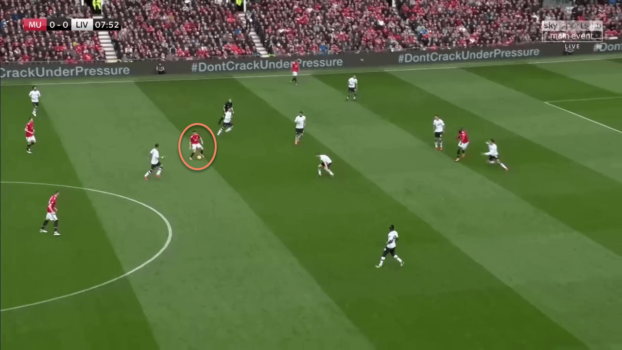
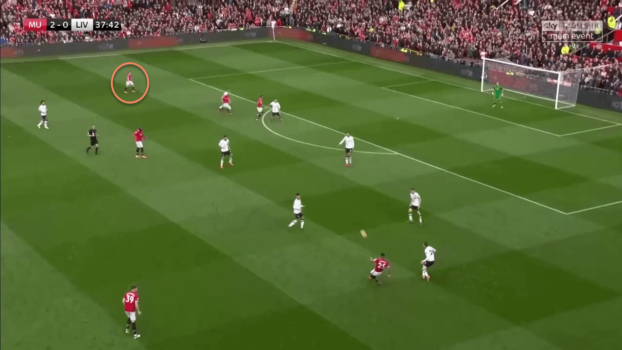
Conclusion
United’s defensive shape and organization were too big an obstacle for Liverpool to overcome, while United’s direct approach unsettled the Reds. Sanchez’s good performance when being used centrally opens up a new option for Mourinho, which leaves Paul Pogba sweating over his place in United’s best side.

